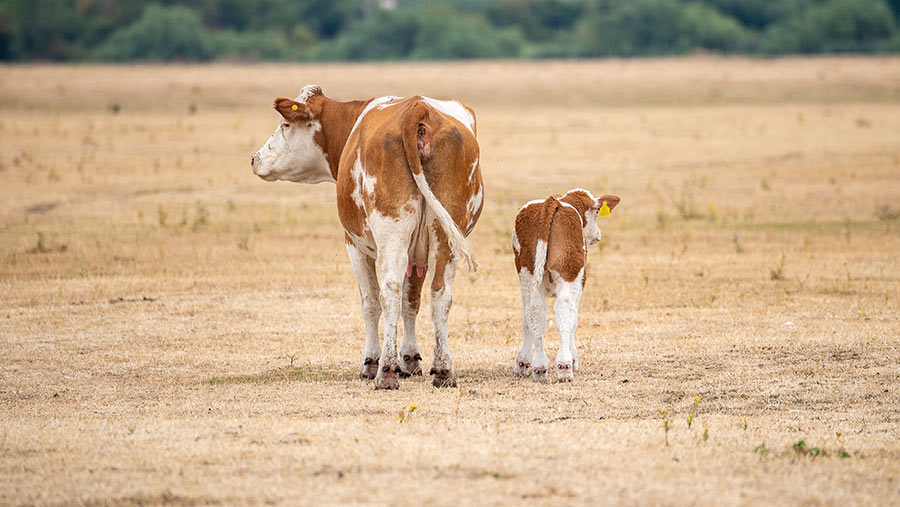Drought pressures cattle weights in dry South
 © Maureen McLean/ Shutterstock
© Maureen McLean/ Shutterstock Cattle are at their lightest since 2018, according to monthly slaughter statistics from Defra (11 August), with steers an average of 2.1kg down, to 357.8kg, and heifers 3.4kg adrift on the year, at 323.1kg.
In 2018, the last time a drought was declared, average dressed carcass weight for steers in July was 356.4kg, and for heifers, 318.3kg.
These are heavier than for July this year, but when compared with the five-year average, the trend is downwards.
See also: Farmers face huge challenge as drought declared official
Prices remain strong, compared with 2021, but began falling in July, according to AHDB deadweight cattle prices by region.
And the fall is sharper in southern and central regions, when compared with overall prices for Great Britain.
Drought status was declared on Friday (12 August) covering the southern half of the country. How much the drought is impacting cattle weights and prices is a matter for debate.
Ashford
Peter Kingwill, auctioneer at Hobbs Parker, thought lighter weights might be accentuated by drought and worries about fodder supplies.
But he suggested they were as much to do with the strength of the finished trade and the relative shortage of supply.
As numbers were still tight and abattoirs were not being oversupplied, they were drawing cattle earlier.
While the drought had “frazzled” the grass, Mr Kingwill said a surplus of “very ordinary” fodder from last year had come in useful for supplementing stock.
However, the weather had “got into the cattle”, he said. “There’s no doubt condition has come off the stock, they’ve lost a bit off their backs and that will have a bearing on store cattle prices this autumn.
“That’s the impact we’ll see in the South East – we already hear concerns from some bigger fatteners and their abattoir contacts that if those cattle are a month behind in September, killing them on 2 January is not much good for Christmas.”
Salisbury
Iain Soutar, auctioneer at Southern Counties Auctioneers, said the drought conditions and the time of year had removed any demand for lighter dairy-cross cattle. “Anything plain, undergrown or not very well-bred is a real struggle.
“[However,] with rain falling, and yarding time getting closer, the right sorts of 400-500kg cattle were a little firmer this week,” he said.
“Barren cows continue to be in strong demand and are underpinning the lower quality end of the finished cattle as well.”
Numbers
- 13: Number of Environment Agency-monitored indicator rivers in July at their lowest levels ever recorded
- 357.8: Average weight (kg) of dressed steer carcass, July 2022, down 3.12kg on the five-year average (Defra)
- 9.1: Drop in southern deadweight all cow price (p/kg) on the week, to 334.6p/kg (AHDB)
